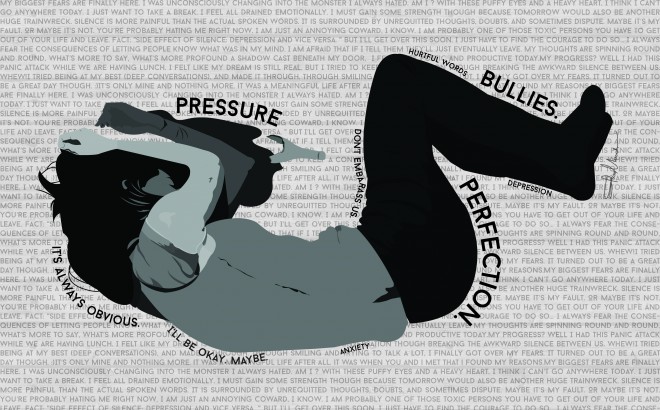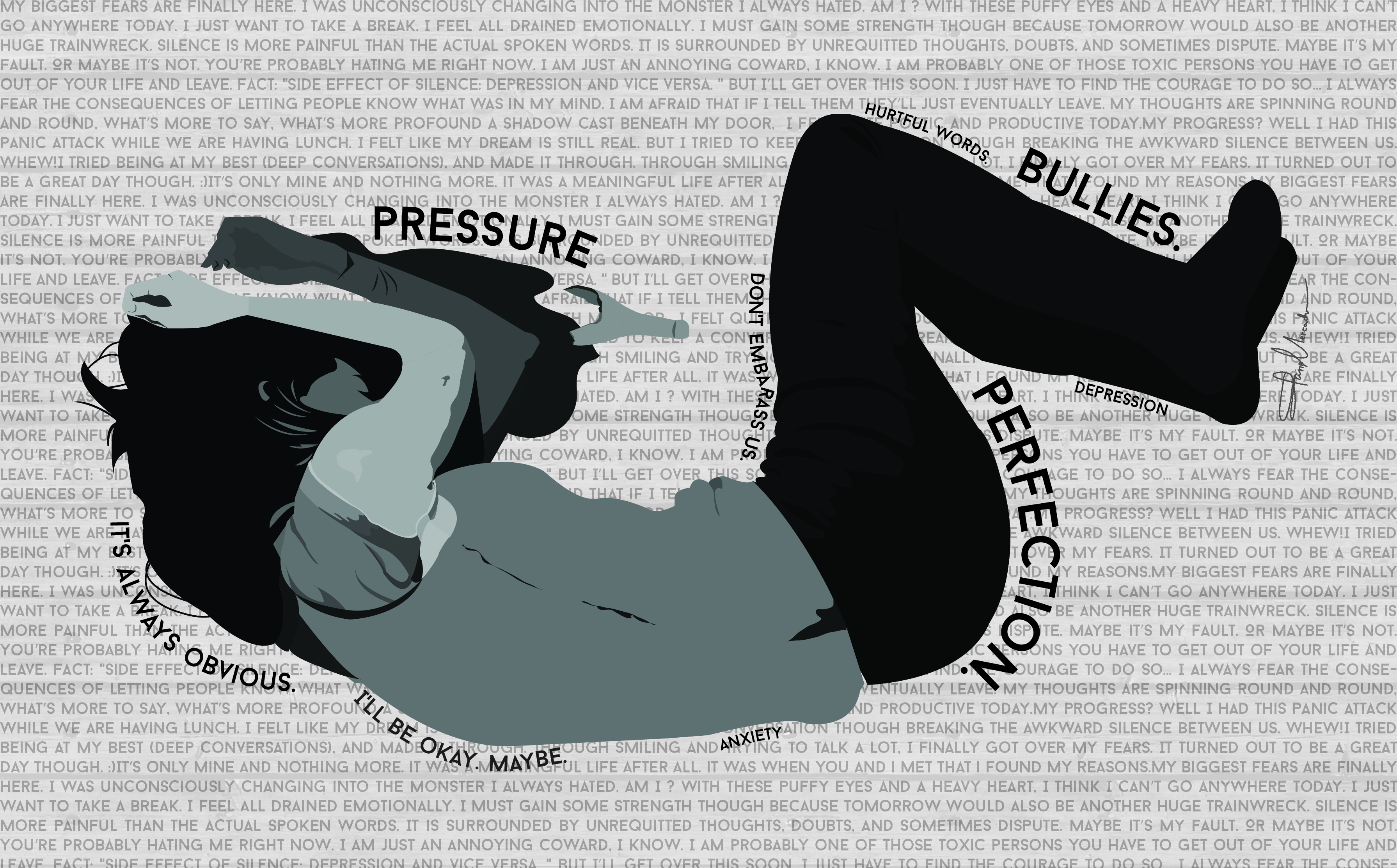
The past two years, there have been one too many deaths by suicide in high schools, colleges and universities.
Most of them happened in Metro Manila, but a number of cases have been documented in the larger cities outside of Manila, as well.
Child and adolescent psychiatrist Dr. Cornelio Banaag says that stress is a huge contributing factor to this phenomenon: “Stress is all around us. It’s a very different world that these children are growing up in. School has become a major source of stress, and relationships, too. When a young person is chronically stressed or anxious, that can lead to depression.”
It doesn’t happen overnight. There are usually predisposing factors.
“Minsan hindi natututukan ng parents, napapansin lang ang anak kung may problema.” (Sometimes parents take their kids for granted because of the busy life. They take notice only when there is a problem already.)
“Many parents tend to be very busy,” says Banaag, as he stresses the importance of staying connected.
“Make a phone call to check on your child at least once or twice each day, say hello, how he or she is doing, what their schedules are. Even when away, we must keep our presence with our children. Do not disconnect no matter how busy you are,” he adds.
It’s also not prudent to belittle or judge your child, teenager or young adult’s stressors. “These are very real in the lives of children. There is just too much toxicity in the environment today,” he notes.
Have parents become too soft that today’s generation lacks resilience?
Banaag says it isn’t so: “Children continue to be very resilient, but the levels of stress they confront now are very different. The increase in technology has made it easy to connect, but just as easy to disconnect. Technology can be every parent’s friend or foe; it’s really a matter of how you use or abuse it.”
Cyberbullying
In addition, Banaag says cyberbullying has become a genuine threat in the lives of today’s youth.
“There are just too many emotions that these kids are going through, and often they don’t know whom to talk to,” he points out. “Some resort to what is called cutting (a type of self-injury that involves wounding one’s self, usually on the arms or legs), and they do this because the overriding feeling is, ‘I’m imploding inside,’ so sometimes cutting is a release.”
Cutting is a phenomenon that scares and baffles parents. And although cutters require extra attention and, in most cases, therapy, Banaag says that these kids are not suicidal.
“Cutters want a release from the pain they are experiencing, but do not know how to release it,” he explains. “Cutting objectifies the pain. There is also the neurobiology of it—the experience of pain on the skin releases natural opioids that are the good hormones. So, in a way, although it is harmful, cutting makes them feel better.”
Banaag encourages his young patients to indulge in some form of exercise to release their stress.
“Exercise is a must and when my patient tells me, ‘I don’t have time to do it,’ I tell them that is precisely when you must exercise, when you are feeling overwhelmed. When you exercise, you neutralize the effects of stress,” he says.
Make sure your child is getting adequate exercise. Regular exercise is one of the secret weapons against depression, helping to normalize insulin levels while boosting the “feel good” hormones in your child’s brain. Getting them moving can do wonders for their mental health (and yours), and is a major improvement over sitting in front of a television or computer.
Banaag says it is also important for parents to be cognizant of their own family histories of depression, or other mental health issues. It is another factor to take into consideration and to look out for. “If it’s there, do not deny it. Seek help because treatment is readily available,” he advises.
Parents must know their child very well, to really listen and not just hear what the child is saying. Provide an open door, and a safe space for the child to share their feelings and fears.
But how does one spot the beginnings of depression? What are the behaviors to look out for? Banaag cites a few points:
“The child or young adult who becomes quiet or withdrawn, when he or she was not previously, is going through something. They become less talkative, and the body or facial expression looks sad. On the one one hand, depression in children and adolescents can often manifest as irritability and/or anger. Parang laging galit sa mundo, galit sa lahat. Parents need to look out for that,” he explains.
Grades that are slipping are another thing to look out for. Unfortunately, he says, rather than use this as an indicator of an underlying problem, parents tend to add more pressure. “That’s why it’s really important to know your child, and to recognize their areas of strengths and areas of improvement. Because it’s already a very stressful world outside, do not add more.”
Loss of interest
He further adds that, often, in depressed children or youth (or even adults), there is a loss of interest in the many things they used to enjoy. Even friendships, he says, are no longer enjoyable, and depressed people will tend to isolate themselves. “They like to brood and listen to sad music and write sad poetry. At the end of the spectrum—and this is what parents need to alert themselves to—they start to bequeath notes and things.”
Banaag says that if parents are quick and alert, they can catch it, and it won’t get to that point: “Engage your child. Don’t be judgmental. It’s very important to listen and to make your presence felt to the child who is undergoing depression.”
Often, parents complain that no matter how much they try, the child will just give very brief answers: “Isang tanong, isang sagot.” To this, Banaag says, “We don’t stop making them feel our presence, even if they are curt with their answers. A parent can just say, ‘If there’s anything you need, I’m just here.’ And then go, give them the space they need. After a while, go back and check on them again, especially before bedtime.”
Conversations with one’s child must be calm and reassuring: “Encourage the conversations by asking curiosity questions, like, ‘How did that happen?’, ‘How do you feel about that?’ or ‘What do you think you might do in that situation?’ The problem with many parents is, they attempt to solve the problem. That’s when the child stops talking. The more empathetic and reassuring statements, the better. Dapat kalmado lang, don’t be upset. So timing is also very important.”
Should suicide be discussed at all if you suspect that your child is depressed? Like, if it happens in school? It’s a delicate and sensitive issue that Banaag says must be discussed layer by layer. If it happened to someone the child knows, you can ask, “You must have felt hurt, how are you dealing with that?” Or, “I’ve heard about people harming themselves. Have you ever thought of things like that?”
Use the event as a learning moment, and at the same time a chance to get to know your child better.
Banaag says a parent can ask, “I heard this sad news. How did you feel about it? How are the people in school dealing with it?”
He also suggests that parents reassure the child by saying, “What about you? If you don’t feel safe, just tell us. It’s okay to talk about it.”
He also emphasizes: “Copycat suicides are most likely to happen if we don’t talk about it. Talking about it is not introducing it. It’s like the elephant in the room.”
E-mail the author at [email protected].















































